
Backhoe loader
We provide various types of Backhoe loaders. If you need customization, please feel free to contact us.
Know More About Backhoe loader
A backhoe loader is a versatile construction machine that combines the capabilities of both a tractor and a front-end loader with a backhoe attachment. It’s commonly used in construction, excavation, and earthmoving projects. The front end loader can be used for tasks like loading and moving materials, while the backhoe attachment is used for digging, trenching, and excavating tasks. Backhoe loaders are popular in the construction industry due to their ability to perform a wide range of tasks, making them valuable equipment on construction sites.
Key features of a Backhoe loader:
- Backhoe Attachment: Backhoe loaders are named for their backhoe attachment, which consists of a digging bucket at the end of a hydraulic arm. This allows them to perform digging, trenching, and excavation tasks.
- Front Loader Attachment: In addition to the backhoe, they have a front loader attachment with a bucket for lifting and moving materials, such as dirt, gravel, or construction debris.
- Four-Wheel Drive: Most backhoe loaders are equipped with four-wheel drive (4WD) for improved traction and mobility on various terrains.
- Versatility: Backhoe loaders are highly versatile, making them suitable for a wide range of tasks, from digging and loading to grading and lifting.
- Compact Size: Backhoe loaders are relatively compact compared to dedicated excavators and loaders, making them well-suited for working in confined spaces or on smaller construction sites.
- 360-Degree Swivel: Some backhoe loaders have a swivel feature that allows the operator to rotate the backhoe attachment for versatile digging and trenching.

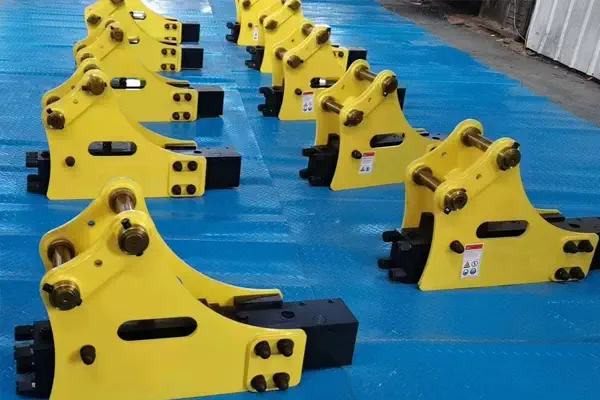

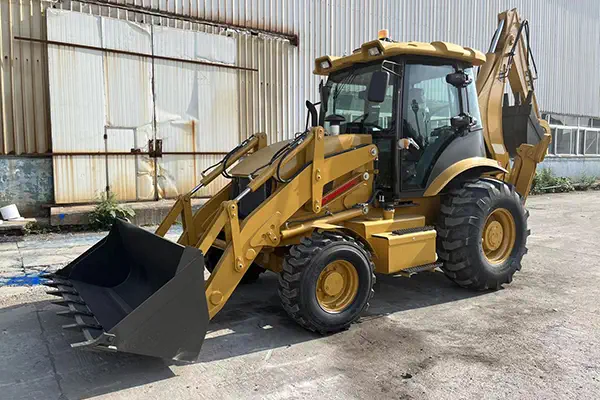
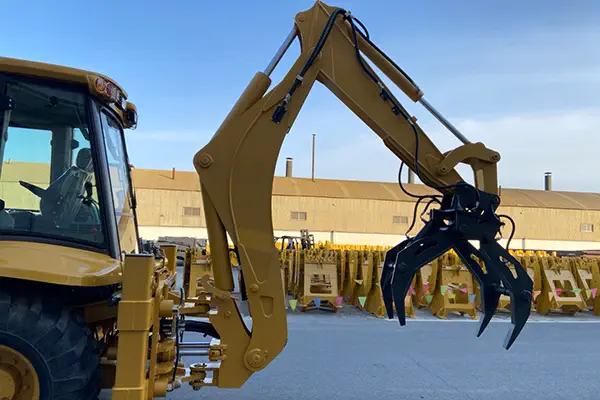

Technical specs comparison of Backhoe loader
| Specification | Unit | 30-25 | 388 | 388T | 388H |
| Operating weight | kg | 7640 | 8200 | 7820 | 10050 |
| Rated load | kg | 2500 | 2500 | 2500 | 2500 |
| Bucket capacity | m³ | 1 | 1 | 1 | 1.2 |
| Dumping height | m | 2770 | 2742 | 2650 | 3050 |
| Tire | / | 16/70-20 | 14-17.5/19.5L-24 | 14-17.5/19.5L-24 | 16.9-28 |
| Engine | / | Yuchai | Yuchai | Weichai | Yuchai |
| Engine power | kw | 75 | 75 | 70 | 75 |
Backhoe loader application area
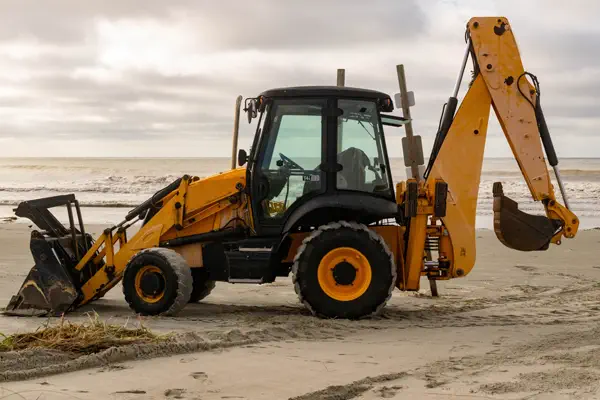
Construction field
- Excavation: Backhoe loaders are commonly used for digging trenches, foundations, and holes for utilities like water and sewer lines. They are highly efficient in digging and removing soil, gravel, and other materials
- Backfilling: After underground utility installation or foundation excavation, backhoe loaders are employed to backfill the trenches and compact the soil for stability.
- Demolition: Backhoe loaders can be equipped with hydraulic hammers or attachments for breaking and demolishing small structures, concrete, and other materials.
- Grading and Leveling: Backhoe loaders are used to level and grade construction sites, ensuring the proper slope and drainage. They can create a smooth, even surface for further construction.
Utility Work
- Utility Line Installation: Backhoe loaders are used to dig trenches for the installation of utility lines, including water mains, sewer pipes, gas lines, and electrical conduits.
- Pipe Repair and Replacement: When utility lines need repair or replacement, backhoe loaders can excavate the area, remove damaged pipes, and install new ones.
- Underground Cable Installation: Backhoe loaders can dig trenches for the installation of underground cables, such as fiber optic or electrical cables.
- Manhole and Vault Installation: They assist in the excavation and installation of manholes, vaults, and utility access points.


Agricultural Field
- Ditching and Trenching: Backhoe loaders are used to dig irrigation ditches, drainage trenches, and channels to manage water flow in fields.
- Pond and Reservoir Construction: They assist in excavating ponds, reservoirs, and water storage structures for agricultural irrigation and livestock watering.
- Land Clearing: Backhoe loaders help clear land by removing rocks, stumps, and debris to prepare for planting crops or constructing infrastructure.
- Tree and Brush Removal: They can uproot or remove trees and brush from agricultural land to create space for cultivation or pasture.
- Fence Installation: Backhoe loaders are used to dig post holes and trenches for installing fences to enclose agricultural areas.
Material Handling
- Loading and Unloading: Backhoe loaders are used to load and unload materials onto trucks, trailers, or other transport vehicles. This includes handling soil, gravel, sand, construction debris, and more.
- Stockpile Management: They can move materials to create, maintain, or distribute stockpiles at construction sites, warehouses, or material yards.
- Pallet Handling: Backhoe loaders equipped with forks or pallet forks are used to lift, move, and stack pallets of materials and goods.
- Bulk Material Transport: They assist in transporting bulk materials, such as aggregates, fertilizer, or grain, within agricultural or industrial facilities.
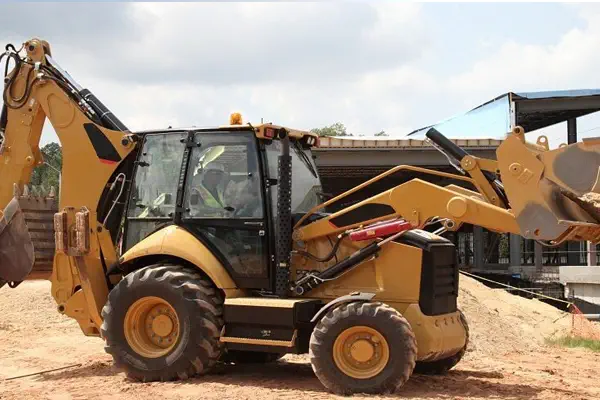
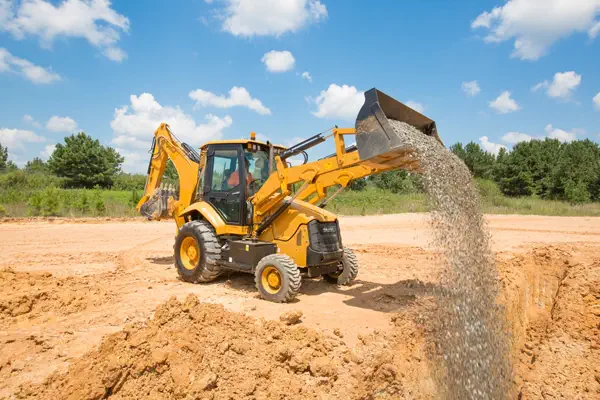
Mining field
- Exploration Pit Digging: Backhoe loaders are used to dig exploration pits to assess the geology and potential mineral deposits.
- Sample Collection: They assist in collecting soil and rock samples for mineral analysis and prospecting.
- Overburden Removal: In open-pit mining, they are employed to remove overburden, which is the soil and rock covering the mineral deposit.
- Infrastructure Construction: In some cases, they are used for building infrastructure, such as mine site offices, worker accommodation, and other facilities.
- Waste Management: Backhoe loaders can handle and move waste materials generated in mining operations, such as empty drums and containers.
Backhoe loader Purchase Guide
Purchasing a backhoe loader is a significant investment, and it’s important to choose the right machine that suits your specific needs. Here’s a purchase guide to help you make an informed decision:
- Define Your Requirements: Determine the primary tasks you need the backhoe loader for (e.g., excavation, material handling, construction). Consider the required digging depth, reach, and lifting capacity. Assess the terrain and working conditions, as this can affect tire type and machine size.
- New vs. Used: Decide whether you want to buy a new or used backhoe loader. New machines typically come with warranties and the latest features, while used machines can be more cost-effective.
- Brand and Model: Research different brands and models available in the market. Consider factors such as reputation, reliability, and dealer support.
- Attachments: Determine what attachments you may need, such as buckets, forks, hammers, or augers. Ensure that the backhoe loader you choose can accommodate these attachments.
- Size and Capacity: Choose a backhoe loader with the right size and capacity to match your intended tasks. Consider factors like digging depth, reach, and lift capacity.
- Engine and Power: Evaluate the power and engine type. Choose between diesel and gasoline engines, keeping in mind the fuel efficiency and emission standards.
- Operator Comfort and Safety: Consider operator comfort and safety features, such as a comfortable cab, ergonomic controls, and safety systems like ROPS and FOPS.
- Maintenance and Service: Research the availability of service and support in your area. A reliable dealer network and access to spare parts are crucial.
- Price and Financing: Get price quotes from multiple dealers and consider financing options if necessary. Make sure to account for the total cost, including attachments and maintenance.
- Warranty and Service Contracts: Inquire about the manufacturer's warranty and any extended service contracts that may be available.
- Research Reviews and Ask for References: Look for user reviews and ask for references from other buyers who have experience with the same model.
- Inspection and Documentation: When buying used equipment, perform a thorough inspection, and review all maintenance and service records.
- Compliance with Regulations: Confirm that the backhoe loader complies with local safety and environmental regulations.
If you have questions when purchasing a Backhoe loaderor would like to learn more about the performance of our Backhoe loader,
please click the button below to contact us.
FAQ About Backhoe loader
A backhoe loader is a versatile construction machine that combines the functions of a front-end loader and a backhoe. It is commonly used for digging, excavation, material handling, and various construction tasks.
A backhoe loader consists of a tractor unit, a front loader attachment, and a hydraulic backhoe arm with a digging bucket.
Key features include a backhoe attachment for digging, a front loader for material handling, four-wheel drive for mobility, and an operator cab.
Backhoe loaders are used for excavation, construction, material handling, roadwork, utility work, agriculture, landscaping, and various other tasks.
Backhoe loaders are versatile machines that combine the functions of a front loader and a backhoe. Excavators are specialized machines designed primarily for digging and excavating tasks.
The maximum digging depth varies by model, but it typically ranges from 10 to 18 feet (3 to 5.5 meters).
Regular maintenance includes checking fluid levels, greasing components, inspecting and changing filters, and addressing wear and tear.
Yes, there are various tire types, including standard pneumatic tires, heavy-duty tires for rough terrain, and foam-filled or solid rubber tires for puncture resistance.
Have Anything To Ask Us?
Please fill in your email in the form and we’ll get back to assist you soon!
- Will contact you within 1 hour.
- Don't worry, we hate spam too!









